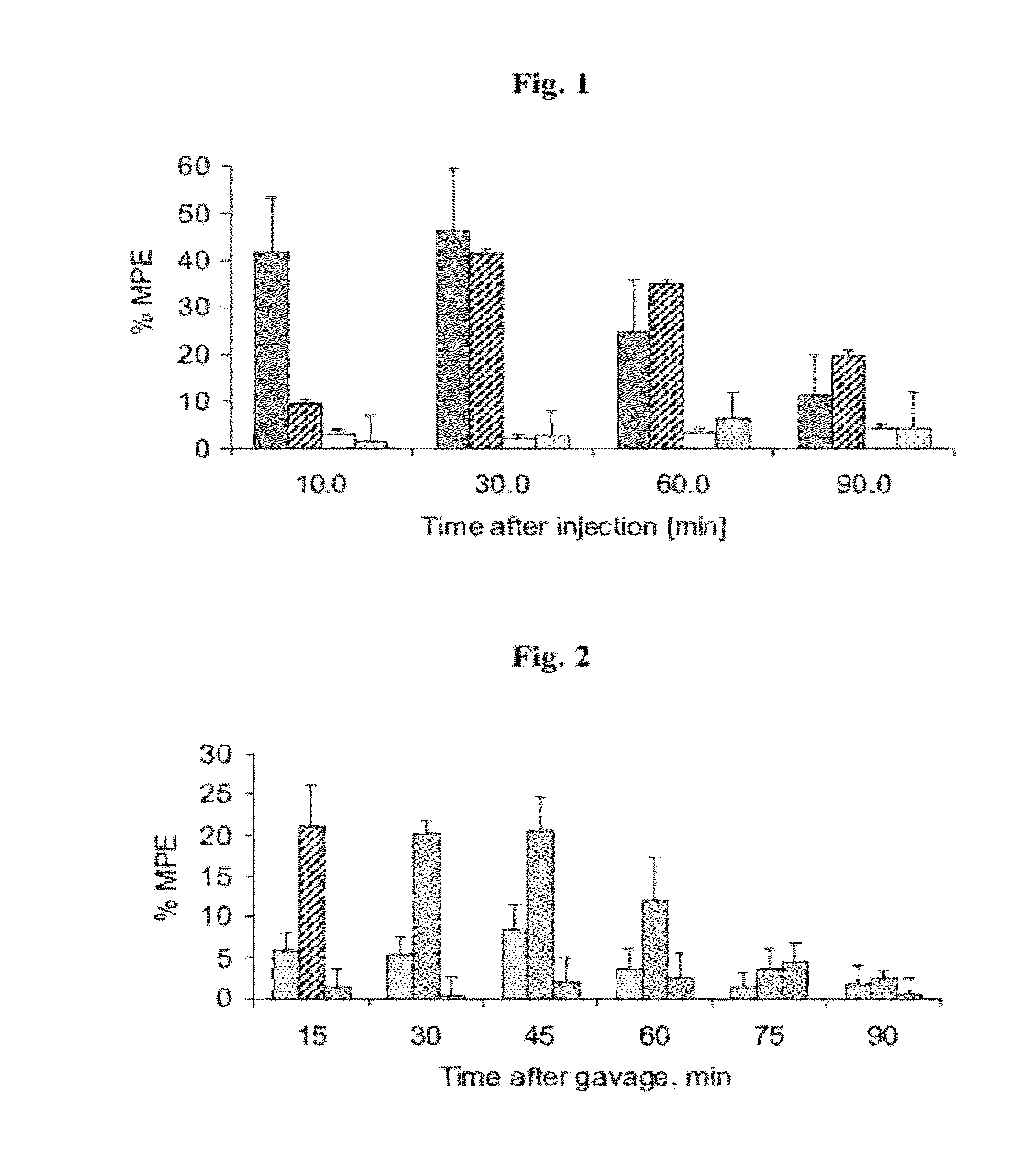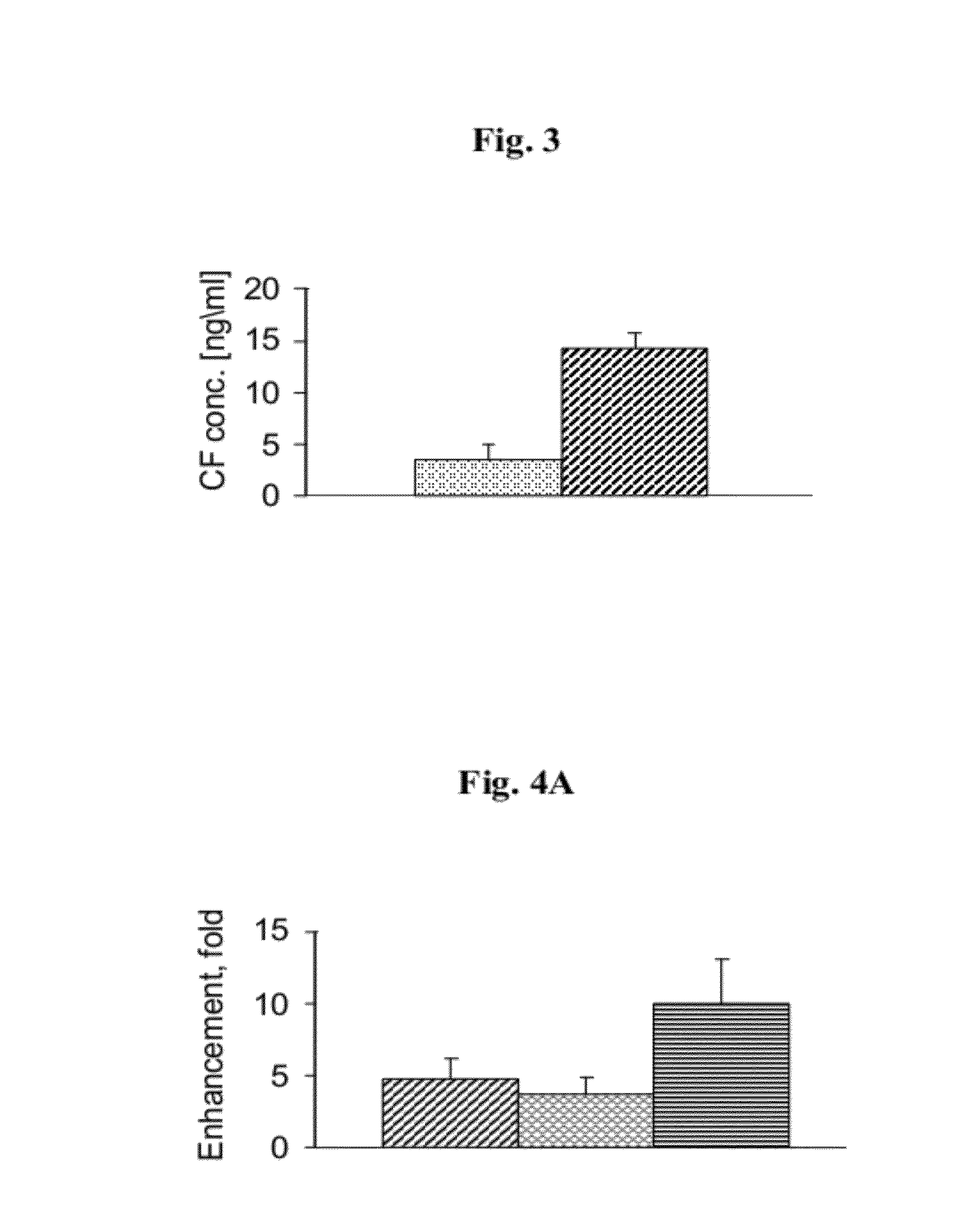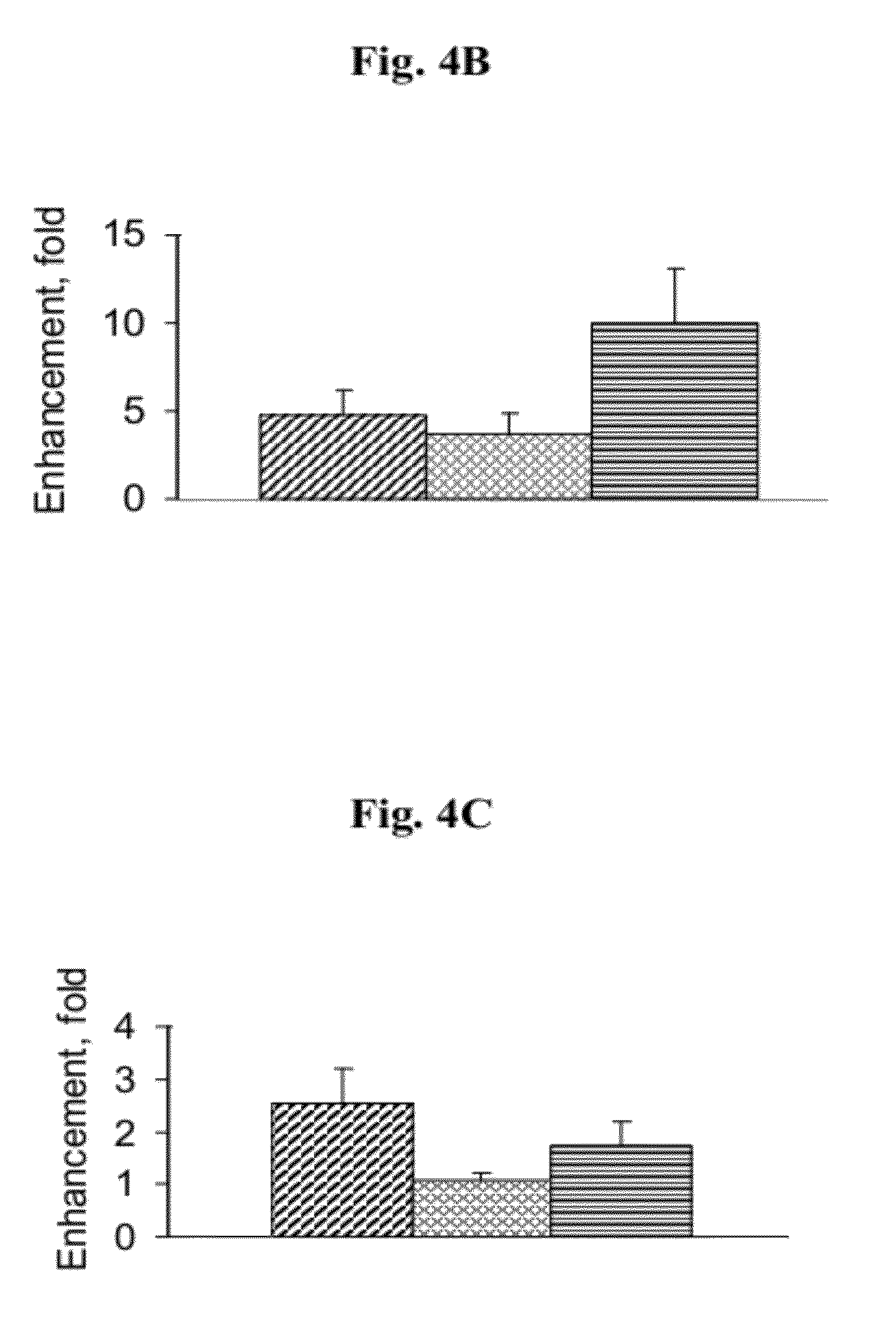Nano-sized particles comprising multi-headed amphiphiles for targeted drug delivery
- Summary
- Abstract
- Description
- Claims
- Application Information
AI Technical Summary
Benefits of technology
Problems solved by technology
Method used
Image
Examples
example 1
Synthesis of Vernoyl Chitosan
[0236]The use of chitosan is limited due to its insolubility at pH higher than 6. One of the most common ways of providing hydrophilic characteristics to this polysaccharide is depolymerization.
i. Degradation of Chitosan by Hydrogen Peroxide
[0237]The oxidative degradation of chitosan was performed with hydrogen peroxide according to methods known in the art (e.g., Wu et al., 2005), using chitosan of an average molecular weight of 5-10 kDa, as follows:
[0238]Chitosan (5 g, Mn=54 KDa, degree of deacetylation 70-80%) was dispersed in 150 ml of water at RT for 1 hour. A solution of hydrogen peroxide (5 ml, 30%) was added dropwise to the chitosan dispersion and the reaction mixture was heated at 60° C. for 6 hours. The pH of the solution was then adjusted to pH=7 with a 1 M NaOH solution. The insoluble chitosan was filtered, the filtrate was evaporated, and absolute ethanol was added to the residue to precipitate the product that was repeatedly washed with abs...
example 2
Synthesis of Vernolyl Glycol Chitosan
[0246]The water-solubility of chitosan (CS) can be substantially enhanced by attaching glycol units to it. Vernolyl glycol chitosan serves as an additive that enhances the penetrability and stability of the nanoparticles of the invention.
[0247]Vernolyl glycol chitosan was prepared based on the process of Kwon et al. (2003) for the preparation of hydrophobically modified glycol chitosans (HGCs), by the covalent attachment of vernolic acid N-hydroxysuccinimide (Ver-NHS) to glycol chitosan via an amide bond to a free amino group of a glucosamine unit. The synthesis of vernolyl glycol chitosan starting from glycol chitosan is depicted in Scheme 1.
[0248]A solution of Ver-NHS (0.1133 g, 0.000283 mol), prepared according to Example 1, in 60 ml of absolute ethanol was dropwise added to 40 ml of a 0.055 N NaHCO3 solution of glycol chitosan (0.2364 g, 0.001153 mol). The mixture was stirred for 72 h in darkness. The reaction mixture was concentrated by redu...
example 3
Preparation of PEG-Vernonia Conjugates
[0251]PEG derivatives of vernolic acid are used as additives in the preparation of the nanoparticles of the invention and were synthesized as follows:
i. Synthesis of PEG2000-Vernonia Conjugate
[0252]Two kinds of PEG-vernonia derivatives were prepared. The first kind was obtained by opening the epoxy ring and binding PEG to the oxygen atom via an ether bond (see Scheme 2). These derivatives are termed herein “PEG-ether derivatives” or “PEG(202)”.
[0253]The second kind was obtained through an enzymatic reaction between vernolic acid and PEG to form an ester bond at the carboxylic group of vernolic acid, as shown in Scheme 3. These derivatives are termed herein “PEG-ester derivatives” or PEG(201)”.
PEG2000-Ether Derivative (PEG(202))
[0254]To a mixture containing 12.95 gr (0.006452 mol) of PEG2000 and BF3 etherate (600 μl), 2 gr (0.006452 mol) of methyl vernolate was injected every 5 to 10 minutes to in portions of 0.2 ml. The reaction mixture was refl...
PUM
| Property | Measurement | Unit |
|---|---|---|
| Diameter | aaaaa | aaaaa |
| Diameter | aaaaa | aaaaa |
| Temperature | aaaaa | aaaaa |
Abstract
Description
Claims
Application Information
 Login to View More
Login to View More - R&D
- Intellectual Property
- Life Sciences
- Materials
- Tech Scout
- Unparalleled Data Quality
- Higher Quality Content
- 60% Fewer Hallucinations
Browse by: Latest US Patents, China's latest patents, Technical Efficacy Thesaurus, Application Domain, Technology Topic, Popular Technical Reports.
© 2025 PatSnap. All rights reserved.Legal|Privacy policy|Modern Slavery Act Transparency Statement|Sitemap|About US| Contact US: help@patsnap.com



